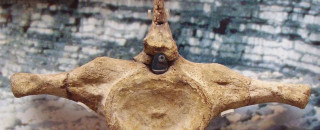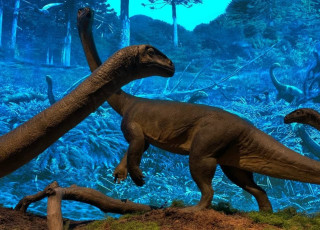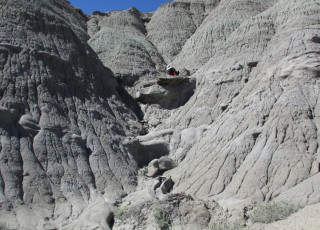Polar DinoFest: Aubrey Roberts
By Riley Black
If you visit the chilly waters off Norway today, you're probably not going to see many reptiles. Maybe, just maybe, you'll spot a leatherback sea turtle if you're lucky. But the story was very different in the Jurassic. About 150 million years ago, University of Oslo paleontologist Aubrey Roberts notes, Arctic waters hosted a whole array of marine reptiles that ranged from fish-shaped squid-snatchers to whale-sized predators that dined on other ocean giants.
Today, what remains of these Jurassic seas is preserved in the rocks of Svalbard. It's a chilly place to work, and one of the few places in the world where polar bears are a concern to paleontologists working in the field. Here, Roberts and colleagues have found shark-like ichthyosaurs, long-necked plesiosaurs, and big-headed pliosaurs, each part of an ocean habitat very different than any known today.
Excavating these fossils is very difficult. Experts can only dig in the summers, Roberts says, when the western and southern parts of the Svalbard archipelago thaw enough to dig. Even then, it's not easy to uncover marine reptiles that can exceed a pickup truck in size. Camping high to avoid polar bears, the researchers descend to prospect and look for white shards of fossil bones that might lead to a bigger find. And this area has been very rich, with skeletons sometimes within a stone's throw of each other.
There's more than just the marine reptiles, though. Roberts notes that the team has found coil-shelled squid relatives called ammonites, remains of underwater methane seeps, and more. Putting all these clues together, experts can start to visualize what this area was like during the Late Jurassic. This was a relatively isolated sea, where new species originated, an evolutionary island full of exceptional creatures.
Click Here to Explore More of NHMU's Polar DinoFest
Riley Black is the author of Skeleton Keys, My Beloved Brontosaurus, Prehistoric Predators, and a science writer for the Natural History Museum of Utah, a part of the University of Utah in Salt Lake City. Our mission is to illuminate the natural world and the place of humans within it. In addition to housing outstanding exhibits for the public, NHMU is a research museum. Learn more.



